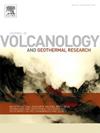Ultraviolet and visible remote sensing of volcanic gas emissions
IF 2.3
3区 地球科学
Q2 GEOSCIENCES, MULTIDISCIPLINARY
Journal of Volcanology and Geothermal Research
Pub Date : 2025-08-09
DOI:10.1016/j.jvolgeores.2025.108423
引用次数: 0
Abstract
As magma rises in volcanic systems, volatile species exsolve from the silicate melt and are emitted as gases into the atmosphere. Measuring the magnitude and composition of gas emissions from volcanoes provides insights into processes occurring deep within the Earth and helps constrain the impact of volcanic degassing on atmospheric chemistry. Optical remote sensing techniques allow volcanic gas emissions to be characterized without the need to access hazardous areas near active volcanic vents. This paper reviews the state of the art in ultraviolet and visible volcanic gas remote sensing from the ground, air, and space. Special attention is given to discussing the physics of atmospheric radiative transfer on which these techniques are based. The functionality and limitations of different remote sensing instruments are examined, making clear that the ideal choice of instrumentation will depend on the volcanic system to which it is applied and the sought measurement parameters. Common algorithms for determining trace gas column densities, gas burdens, and volcanic emission rates from measurements of spectral radiance are outlined and compared, showing how some algorithms attempt to model the physics of the measurement while others maximize sensitivity. Several examples demonstrate how remote sensing measurements continue to advance our understanding of volcanic systems and their impact on the atmosphere. Finally, a few promising directions of inquiry are suggested that could lead to improvements in remote sensing instrumentation and analysis techniques. By combining spectroscopic and imaging techniques, improving our understanding of atmospheric radiative transfer, expanding the suite of target gases, and increasing the coverage and frequency of observations, we stand to significantly improve our ability to detect and quantify volcanic gas emissions and gain new insights into important Earth-system processes.
火山气体排放的紫外和可见光遥感
当岩浆在火山系统中上升时,挥发性物质从硅酸盐熔体中析出,并以气体的形式排放到大气中。测量火山气体排放的大小和组成,可以深入了解地球深处发生的过程,并有助于限制火山脱气对大气化学的影响。光学遥感技术可以在不需要进入活火山喷口附近的危险区域的情况下对火山气体排放进行表征。本文综述了地面、空中和空间的紫外和可见光火山气体遥感技术的最新进展。特别注意讨论作为这些技术基础的大气辐射传输的物理学。研究了不同遥感仪器的功能和局限性,明确了仪器的理想选择将取决于所应用的火山系统和所寻求的测量参数。从光谱辐射测量中确定痕量气体柱密度、气体负荷和火山发射率的常用算法进行了概述和比较,展示了一些算法如何试图模拟测量的物理过程,而另一些算法如何最大化灵敏度。几个例子表明遥感测量如何继续推进我们对火山系统及其对大气影响的理解。最后,提出了几个有希望的调查方向,这些方向可能导致遥感仪器和分析技术的改进。通过结合光谱和成像技术,提高我们对大气辐射传输的理解,扩大目标气体的组合,增加观测的覆盖范围和频率,我们将显著提高我们探测和量化火山气体排放的能力,并获得对重要地球系统过程的新见解。
本文章由计算机程序翻译,如有差异,请以英文原文为准。
求助全文
约1分钟内获得全文
求助全文
来源期刊
CiteScore
5.90
自引率
13.80%
发文量
183
审稿时长
19.7 weeks
期刊介绍:
An international research journal with focus on volcanic and geothermal processes and their impact on the environment and society.
Submission of papers covering the following aspects of volcanology and geothermal research are encouraged:
(1) Geological aspects of volcanic systems: volcano stratigraphy, structure and tectonic influence; eruptive history; evolution of volcanic landforms; eruption style and progress; dispersal patterns of lava and ash; analysis of real-time eruption observations.
(2) Geochemical and petrological aspects of volcanic rocks: magma genesis and evolution; crystallization; volatile compositions, solubility, and degassing; volcanic petrography and textural analysis.
(3) Hydrology, geochemistry and measurement of volcanic and hydrothermal fluids: volcanic gas emissions; fumaroles and springs; crater lakes; hydrothermal mineralization.
(4) Geophysical aspects of volcanic systems: physical properties of volcanic rocks and magmas; heat flow studies; volcano seismology, geodesy and remote sensing.
(5) Computational modeling and experimental simulation of magmatic and hydrothermal processes: eruption dynamics; magma transport and storage; plume dynamics and ash dispersal; lava flow dynamics; hydrothermal fluid flow; thermodynamics of aqueous fluids and melts.
(6) Volcano hazard and risk research: hazard zonation methodology, development of forecasting tools; assessment techniques for vulnerability and impact.

 求助内容:
求助内容: 应助结果提醒方式:
应助结果提醒方式:


